Sailing yachts are a popular choice for those who want to experience the thrill of sailing while enjoying the luxury of a well-equipped vessel. Sailing yachts come in a variety of sizes and styles, from small day sailors to large, luxurious cruisers. Whether you’re a beginner or an experienced sailor, there’s a sailing yacht that’s perfect for you.
In this ultimate guide to sailing yachts, you’ll learn everything you need to know about sailing yachts, including how to choose the right yacht for your needs, how to sail a yacht, and how to maintain your yacht. You’ll also learn about the different types of sailing yachts, including monohulls and catamarans, and the various features and amenities that are available on modern sailing yachts. With this comprehensive guide, you’ll be ready to set sail on your next adventure.
History of Sailing Yachts
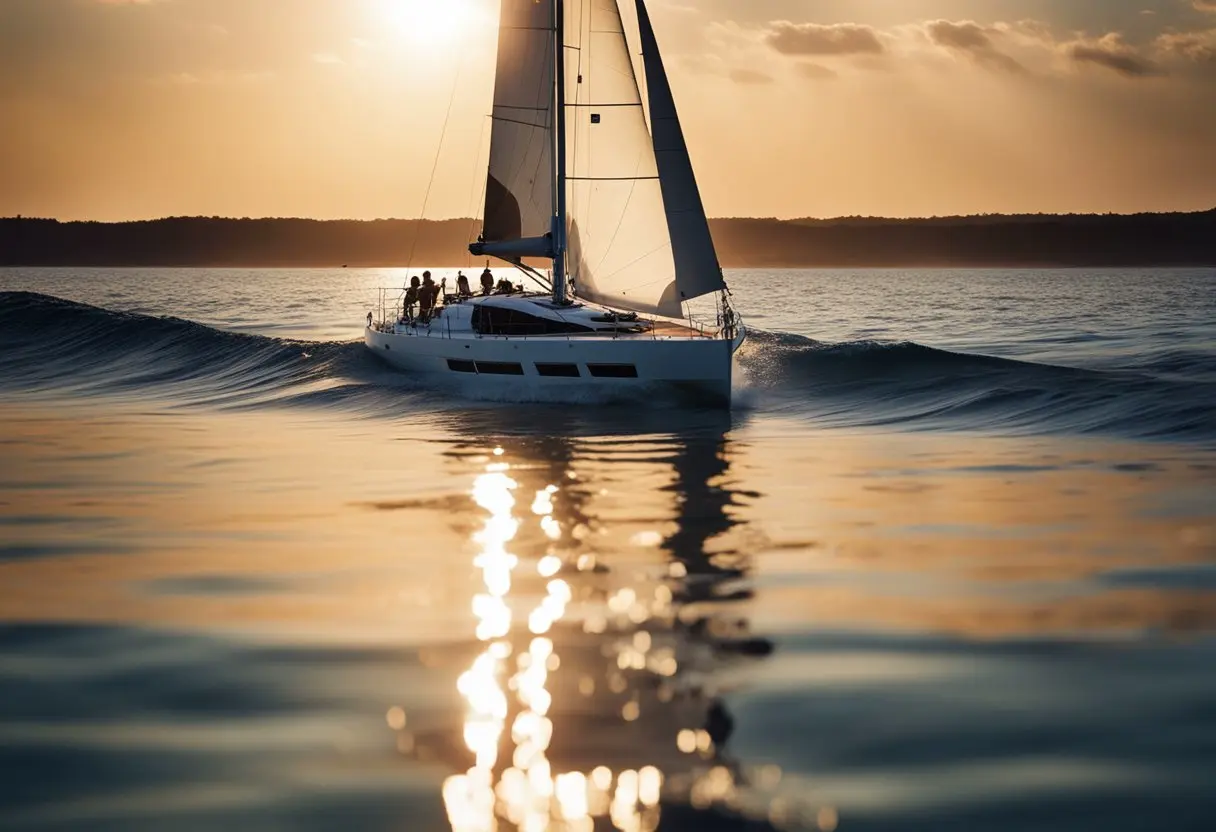
Sailing yachts have a rich history that dates back to the 1600s in Europe. The first recorded pleasure vessel was built for the son of King James I of England. However, the history of boats for recreational purposes goes back much further. The ancient Egyptians used rowed boats for transportation and fishing, and they also used sails made from reeds to harness the wind.
In the 17th century, the Dutch were known for their seafaring prowess and were the first to use yachts for pleasure sailing. They built small, fast boats called jachts, which were used for racing and cruising. The English soon adopted the jacht design, and the term “yacht” became synonymous with pleasure sailing.
During the 18th and 19th centuries, yachts became larger and more luxurious. The wealthy would commission yachts as a status symbol, and they were often used for entertaining guests. The America’s Cup, which began in 1851, further popularized yacht racing and led to the development of faster, more advanced sailing yachts.
Today, sailing yachts are used for a variety of purposes, including racing, cruising, and chartering. They range in size from small daysailers to massive superyachts that can accommodate dozens of guests. Advances in technology have made sailing yachts more efficient and easier to operate, but the basic principles of sailing remain the same. Sailing yachts continue to be a symbol of luxury and adventure, and they offer a unique way to explore the world’s oceans and waterways.
Types of Sailing Yachts
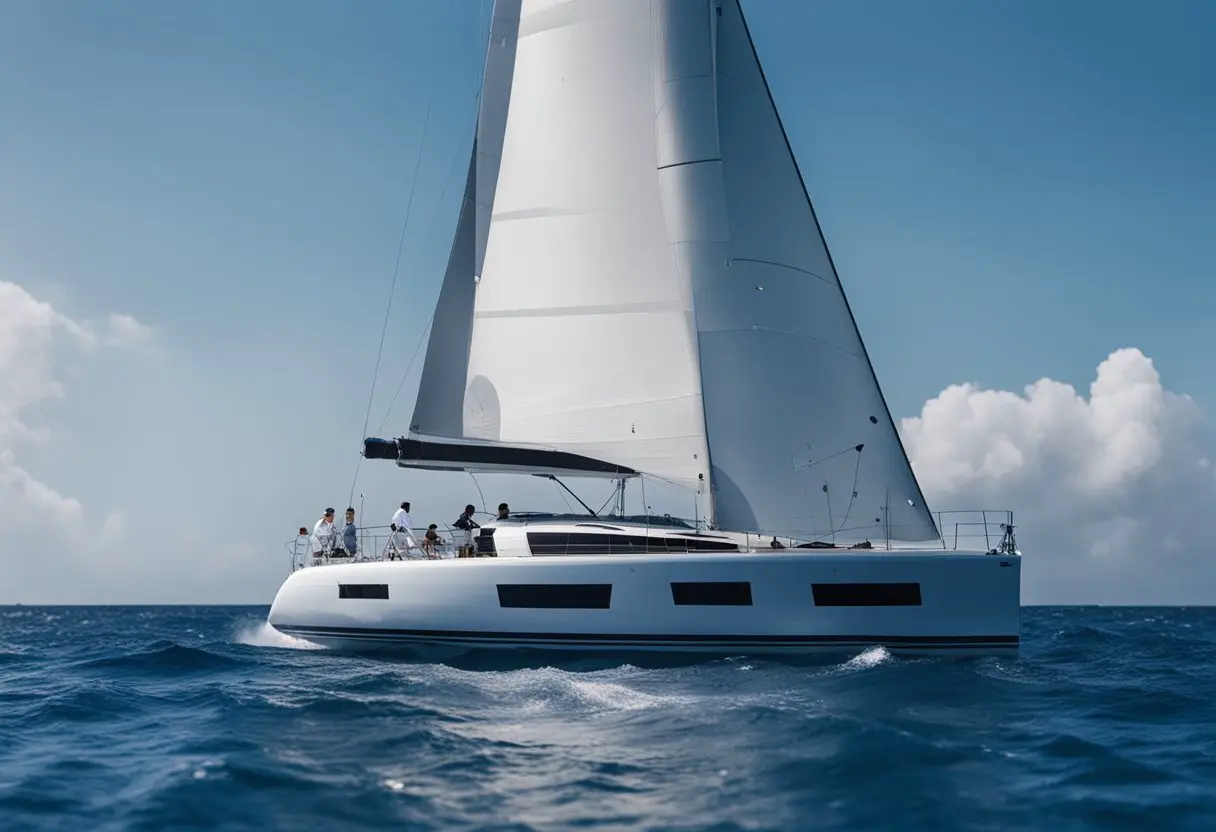
Sailing yachts come in various types and sizes, each designed to cater to a specific purpose. Here are the most common types of sailing yachts:
Day Sailing Yachts
Day sailing yachts are small boats designed for short trips or day trips. They are perfect for beginners or those who want to sail in calm waters. These yachts are easy to handle and maneuver, making them ideal for exploring shallow waters. Day sailing yachts usually have a small cabin, a cockpit, and a small sail area.
Weekender Yachts
Weekender yachts are slightly larger than day sailing yachts and are designed for weekend trips or short cruises. They usually have a small cabin with basic amenities such as a galley and a toilet. Weekender yachts are perfect for couples or small families who want to enjoy a weekend getaway.
Cruising Yachts
Cruising yachts are larger boats designed for long-distance cruising. They have spacious cabins with all the necessary amenities such as a galley, a toilet, and a shower. Cruising yachts are perfect for those who want to sail for extended periods and explore different destinations. These yachts have a larger sail area and are equipped with advanced navigation systems.
Luxury Sailing Yachts
Luxury sailing yachts are high-end boats designed for ultimate comfort and luxury. They have spacious cabins with luxurious amenities such as a Jacuzzi, a gym, and a cinema room. Luxury sailing yachts are perfect for those who want to enjoy a luxurious sailing experience. These yachts have a larger sail area and are equipped with advanced navigation and entertainment systems.
Racing Yachts
Racing yachts are designed for speed and performance. They have a sleek design with a large sail area and are equipped with advanced racing equipment such as carbon fiber sails and hydraulic winches. Racing yachts are perfect for those who want to participate in sailing races or regattas. These yachts require a skilled crew and are not recommended for beginners.
In conclusion, choosing the right type of sailing yacht depends on your sailing experience, budget, and purpose. It is essential to consider all the factors before making a decision.
Understanding Yacht Design
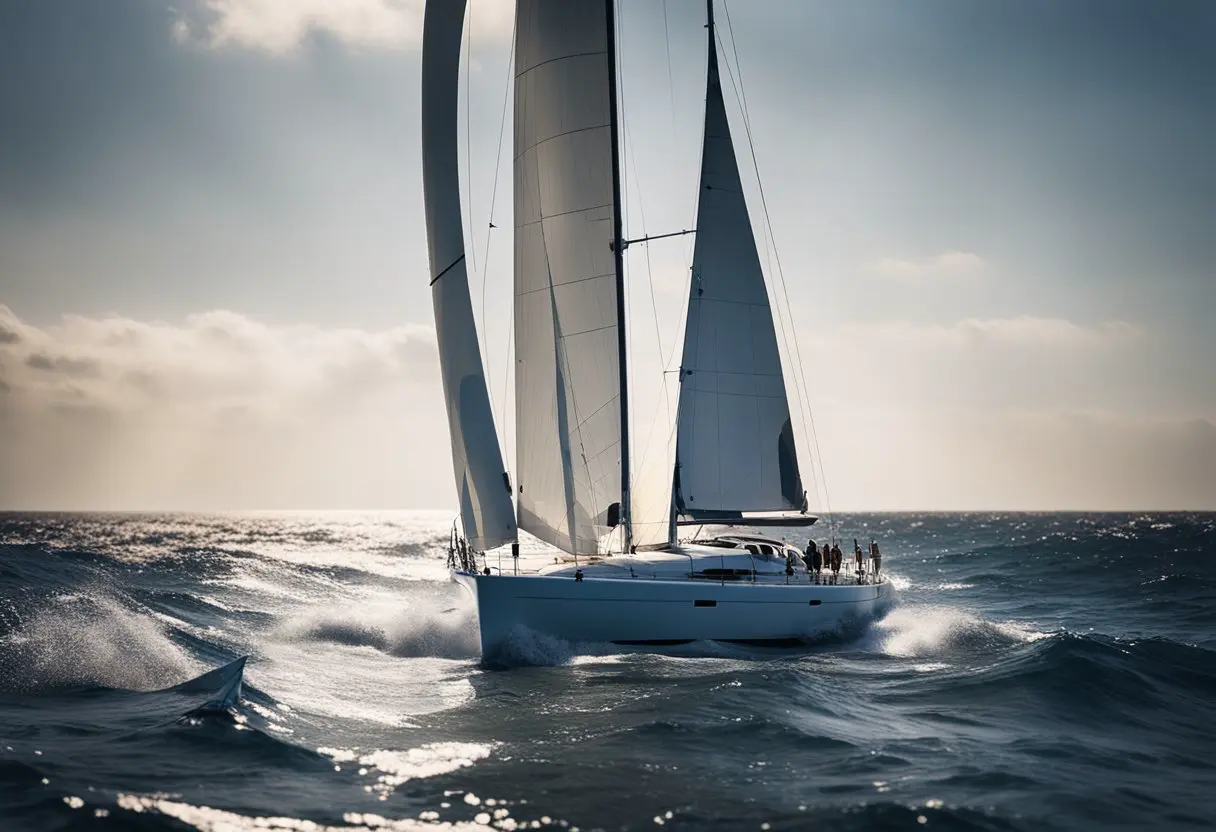
Sailing a yacht is a unique and exhilarating experience. It requires a blend of skill, knowledge, and the right equipment. Understanding the design of a yacht is crucial for anyone who wants to sail one.
Hull Types
Yacht hulls come in different shapes and sizes, and each has its advantages and disadvantages. The most common hull types are monohull, catamaran, and trimaran. Monohulls are the most traditional and are known for their ability to cut through the water with ease. Catamarans have two hulls, which provide more stability and space. Trimarans have three hulls, which make them faster and more stable than monohulls.
Keel Design
The keel is an essential part of a yacht’s design. It provides stability and helps the yacht stay upright. There are two main types of keels: fin and full. Fin keels are long and narrow, and they provide good performance in light winds. Full keels are wider and provide better stability in heavy seas.
Sail Plans
The sail plan is the set of sails that a yacht uses. The most common types of sail plans are sloop, cutter, and ketch. Sloops have a single mast and a mainsail with a jib or genoa. Cutters have two headsails and a mainsail. Ketches have two masts, a mainsail, and a mizzen sail.
Rigging
The rigging is the system of ropes and wires that support the mast and sails. There are two main types of rigging: masthead and fractional. Masthead rigging has a single forestay that attaches to the top of the mast. Fractional rigging has a forestay that attaches to a point below the top of the mast.
Understanding yacht design is essential for anyone who wants to sail a yacht. The hull type, keel design, sail plan, and rigging are all crucial components that affect the yacht’s performance. By learning about these components, sailors can make informed decisions about the type of yacht they want to sail and the conditions they want to sail in.
Essential Sailing Skills
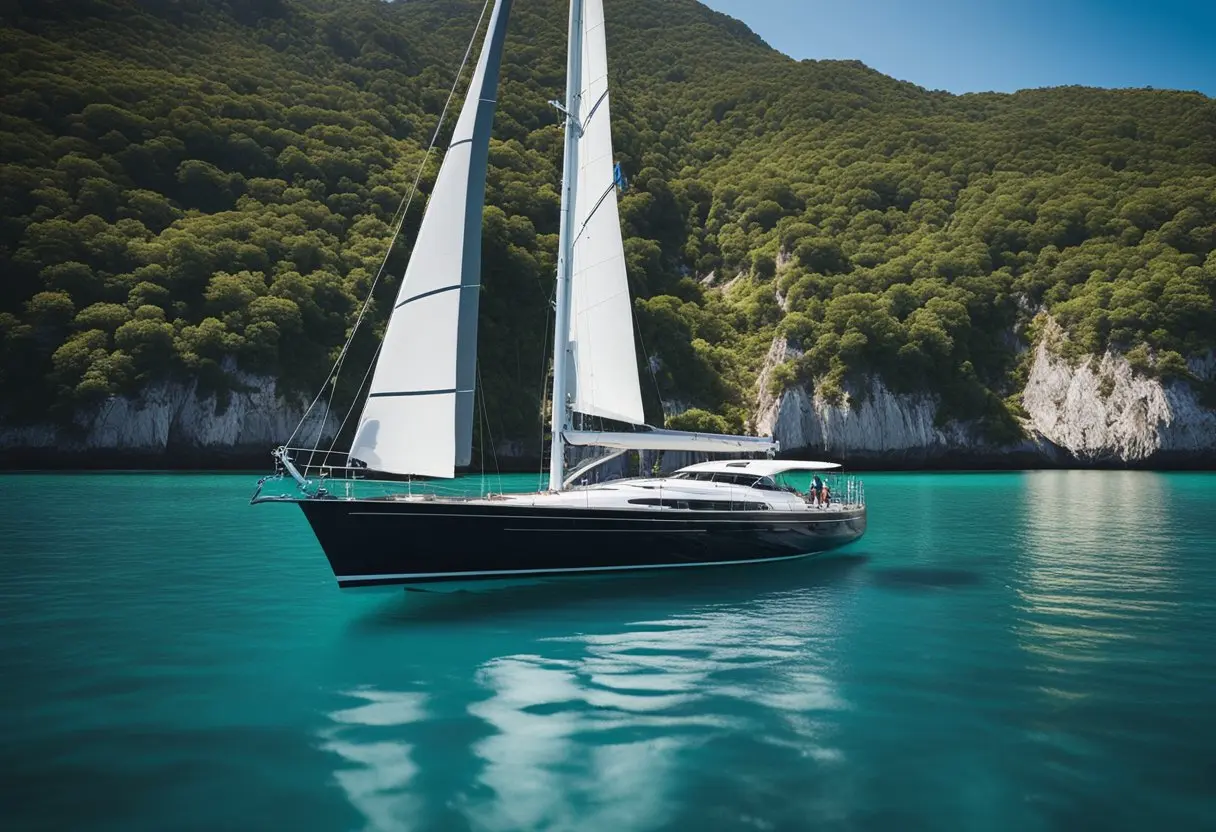
Learning to sail a yacht requires a set of essential skills that every sailor must master. These skills include basic navigation, sail handling, knots and ropework, and safety procedures.
Basic Navigation
Navigating a yacht involves understanding the wind direction, sail trim, and steering the yacht. The sailor must also learn how to read the charts, use the compass, and navigate in different weather conditions.
Sail Handling
Sail handling is the art of setting and adjusting the sails to make the yacht move in the desired direction. The sailor must learn how to hoist and lower the sails, reef them in strong winds, and trim them to optimize the yacht’s speed.
Knots and Ropework
Knots and ropework are essential skills that every sailor must master. The sailor must learn how to tie different types of knots, splice ropes, and use the lines to control the sails and the yacht.
Safety Procedures
Safety procedures are critical to sailing a yacht safely. The sailor must learn how to use safety equipment, such as life jackets, harnesses, and flares, and how to react in emergencies, such as man overboard, fire, or collision.
By mastering these essential sailing skills, a sailor can confidently navigate and handle a yacht in different conditions and enjoy the thrill and adventure of sailing.
Yacht Maintenance
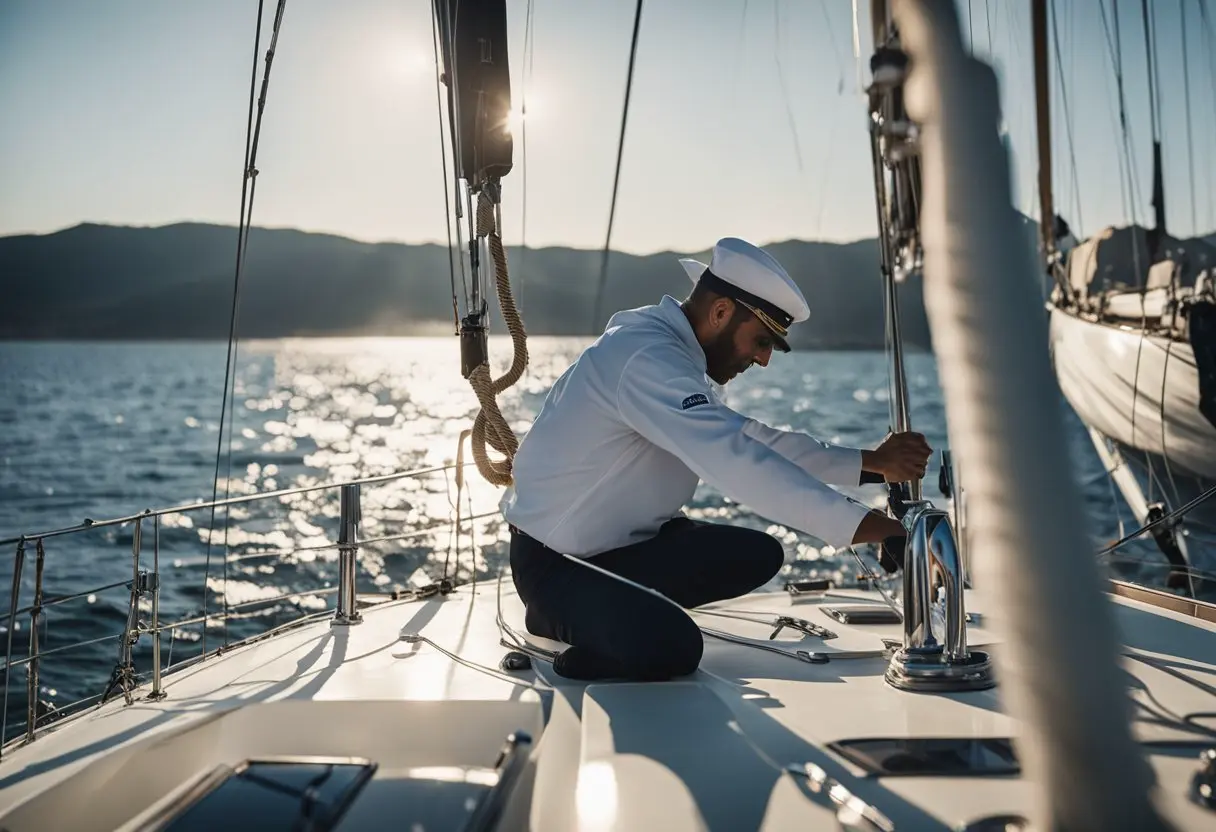
Maintaining a sailing yacht is crucial to ensure its longevity and safe operation. Routine upkeep, hull maintenance, sail care, and engine and systems checks are the four main areas to focus on when it comes to yacht maintenance.
Routine Upkeep
Routine upkeep includes tasks such as cleaning, polishing, and lubricating various parts of the yacht. It is essential to keep the yacht clean to prevent the growth of mold, mildew, and other harmful microorganisms. Regular cleaning also helps to maintain the yacht’s appearance and value.
Lubrication is another crucial aspect of routine upkeep. It is important to lubricate the yacht’s moving parts, such as hinges, winches, and blocks, to prevent rust and corrosion. Regular lubrication helps to ensure smooth operation and prolongs the life of these parts.
Hull Maintenance
Hull maintenance is critical to ensure the yacht’s safety and performance. The hull is the most critical part of the yacht, and any damage to it can compromise the yacht’s integrity. It is important to inspect the hull regularly for any signs of damage, such as cracks, blisters, or delamination.
If any damage is found, it is essential to repair it immediately to prevent further damage. Hull maintenance also includes cleaning and painting the hull to prevent marine growth and protect it from the elements.
Sail Care
Sails are an essential part of a sailing yacht, and proper care is necessary to ensure their longevity and performance. It is important to inspect the sails regularly for any signs of wear and tear, such as tears, holes, or fraying.
Sail care also includes cleaning and storing the sails properly when not in use. It is important to remove any salt or dirt buildup from the sails to prevent damage and ensure their longevity.
Engine and Systems Check
The engine and systems of a sailing yacht are critical to its safe operation. It is essential to perform regular checks on the engine and systems to ensure they are in good working condition. This includes checking the oil level, coolant level, and fuel level.
It is also important to inspect the electrical and plumbing systems regularly for any signs of damage or wear and tear. Any issues with the engine or systems should be addressed immediately to prevent further damage and ensure the yacht’s safe operation.
In conclusion, yacht maintenance is critical to ensure the safe operation and longevity of a sailing yacht. By following routine upkeep, hull maintenance, sail care, and engine and systems checks, yacht owners can ensure their yacht is always in good condition and ready for their next adventure on the water.
Choosing the Right Sailing Yacht
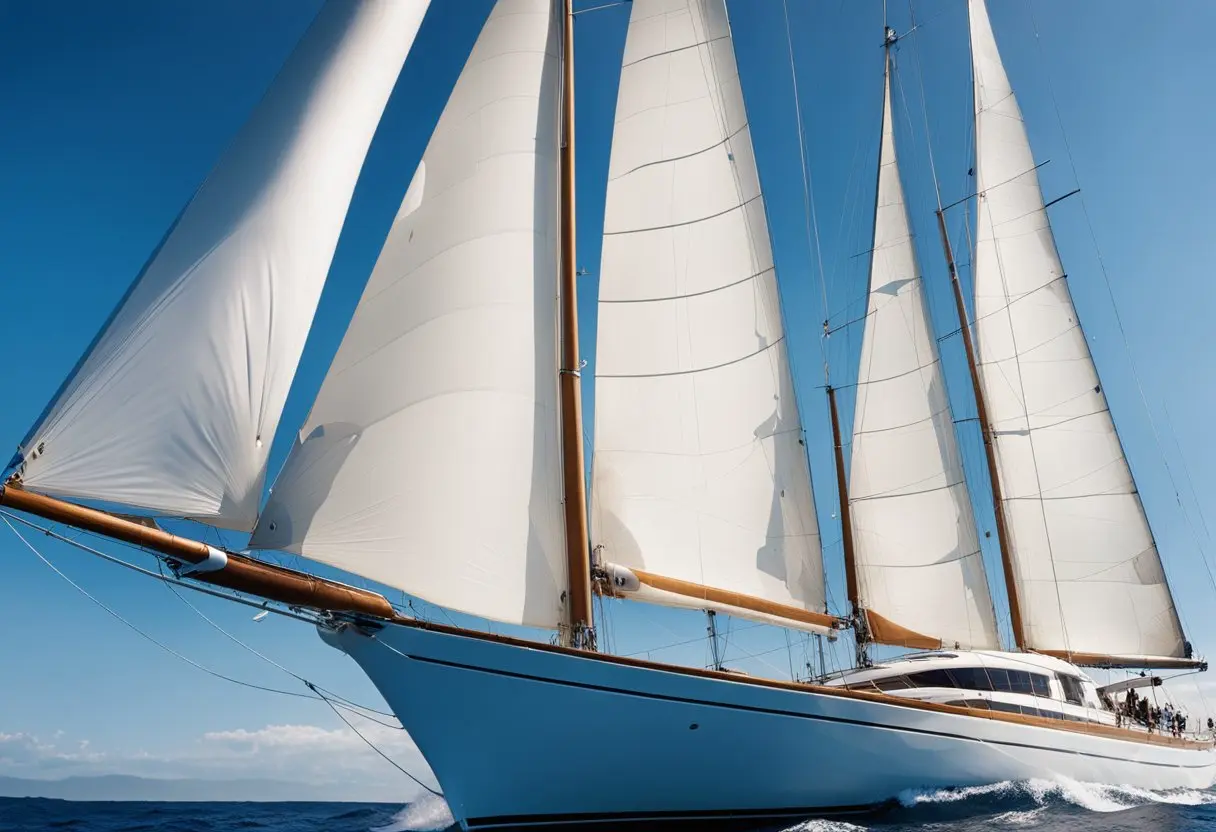
When it comes to choosing the right sailing yacht, there are several factors to consider. In this section, we will discuss the most important considerations, including new vs. used, budget, size and layout, and inspection and survey.
New vs. Used
One of the first decisions to make when choosing a sailing yacht is whether to purchase a new or used vessel. New yachts offer the latest technology and design features, as well as the peace of mind that comes with a warranty. However, they also come with a higher price tag. Used yachts, on the other hand, can be more affordable, but buyers must be careful to inspect the vessel thoroughly to ensure it is in good condition.
Budget Considerations
Another important consideration when choosing a sailing yacht is budget. It is important to determine a realistic budget before beginning the search, as this will help narrow down the options. In addition to the purchase price of the yacht, buyers must also consider ongoing maintenance and operating costs, including insurance, slip fees, and fuel.
Size and Layout
The size and layout of the yacht is another important consideration. Buyers must decide how many people will be using the yacht and what activities they will be doing, such as day sailing or extended cruising. This will help determine the appropriate size and layout of the yacht. It is also important to consider the yacht’s storage and living spaces, as well as its performance capabilities.
Inspection and Survey
Finally, before purchasing a sailing yacht, it is important to have it inspected and surveyed. A professional survey will identify any potential problems with the yacht, such as structural issues or mechanical problems. This information can be used to negotiate the price of the yacht or to decide whether to move forward with the purchase.
In summary, choosing the right sailing yacht requires careful consideration of several factors, including new vs. used, budget, size and layout, and inspection and survey. By taking the time to consider these factors, buyers can find the perfect yacht for their needs and budget.
Sailing Destinations
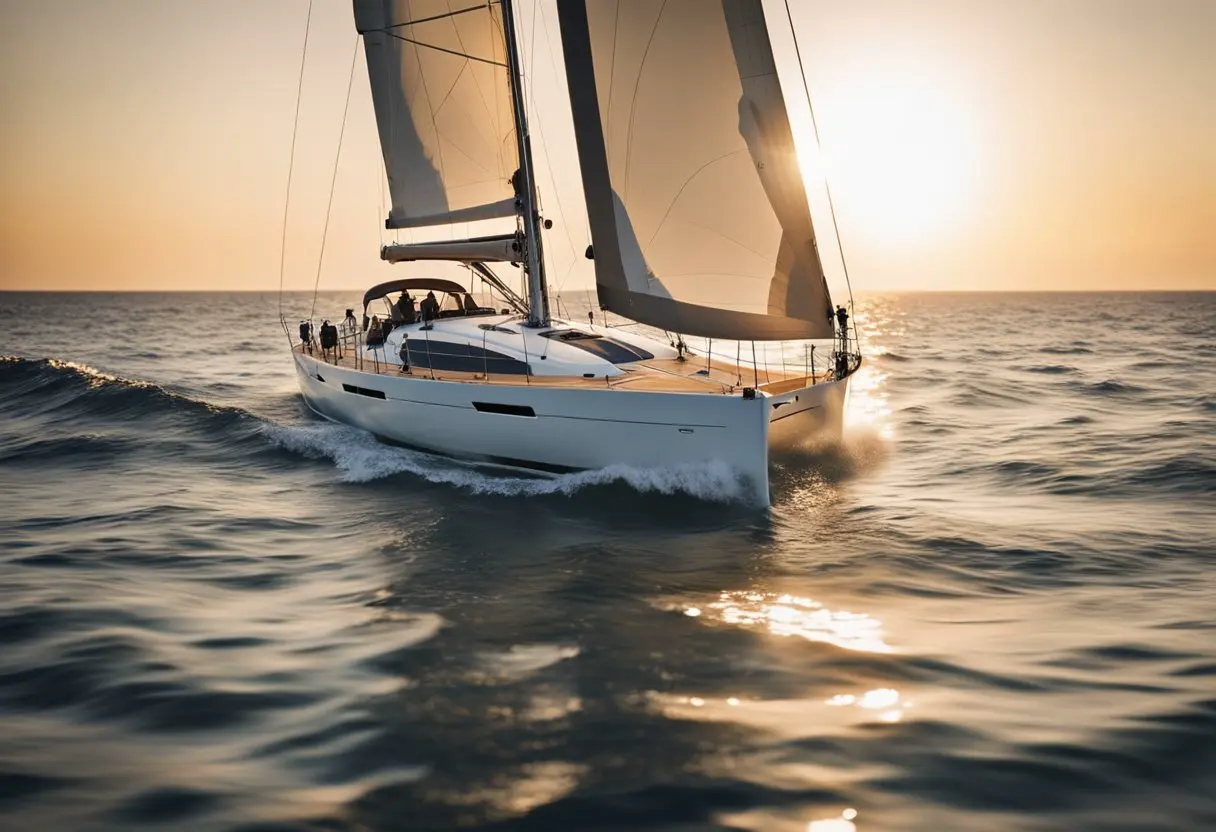
Sailing yachts are the perfect way to explore the world’s oceans, and there are many incredible destinations to choose from. Whether you’re looking for a Caribbean adventure, a Mediterranean gem, an exotic Pacific escape, or a cold-weather sailing experience, there’s a destination for everyone.
Caribbean Adventures
The Caribbean is one of the most popular destinations for sailing yachts. With its crystal-clear waters, stunning beaches, and numerous islands to explore, it’s easy to see why. Some of the most popular destinations in the Caribbean include the British Virgin Islands, the Bahamas, Antigua, and St. Martin. Each of these destinations offers its unique charm and plenty of opportunities for sailing, snorkeling, and exploring.
Mediterranean Gems
The Mediterranean is another popular destination for sailing yachts. With its rich history, beautiful coastline, and stunning islands, it’s no wonder that so many people choose to sail here. Some of the most popular destinations in the Mediterranean include the French Riviera, the Greek Islands, and the Amalfi Coast. Each of these destinations offers its unique charm and plenty of opportunities for sailing, exploring, and sampling delicious local cuisine.
Exotic Pacific Escapes
For those looking for something a little more exotic, the Pacific offers some incredible sailing destinations. From the turquoise waters of French Polynesia to the rugged coastline of New Zealand, there’s something for everyone in the Pacific. Other popular destinations in the Pacific include Fiji, Vanuatu, and the Whitsunday Islands in Australia.
Cold-Weather Sailing
For those who enjoy a bit of adventure and don’t mind the cold, there are some incredible sailing destinations in colder climates. Norway’s stunning fjords offer some of the most breathtaking scenery in the world, while Alaska’s rugged coastline is a true wilderness experience. Other popular cold-weather sailing destinations include Iceland, Canada’s east coast, and the Scottish Highlands.
No matter where you choose to sail, there’s no doubt that a sailing yacht is the perfect way to explore the world’s oceans. With so many incredible destinations to choose from, the hardest part will be deciding where to go first.
Yacht Ownership

Owning a yacht is a significant investment that requires careful consideration. Before buying a sailing yacht, it is essential to understand the costs associated with ownership, insurance, and registration requirements, joining a yacht club, and charter and sharing options.
Cost of Ownership
The cost of owning a sailing yacht can vary depending on the size, make, and model of the yacht. According to Syrus Yachts, a new yacht could cost anywhere from $100,000 to $10 million. Besides the initial purchase price, additional costs such as maintenance, storage, and fuel expenses should also be factored into the total cost of ownership.
Insurance and Registration
In most countries, yacht owners are required to register their vessels and obtain insurance coverage. Registration requirements and insurance policies can vary depending on the country of registration and the intended use of the yacht. It is essential to research the registration and insurance requirements before purchasing a yacht.
Joining a Yacht Club
Joining a yacht club can provide yacht owners with access to various amenities, including dockage, maintenance and repair services, and social events. Yacht clubs can also offer opportunities to meet other yacht owners and participate in sailing events and races. Yacht clubs can range from exclusive and expensive to more affordable and accessible options.
Charter and Sharing Options
Chartering a yacht can be an excellent option for those who want to experience yacht ownership without the full-time commitment and expense. Chartering a yacht allows individuals to rent a yacht for a specific period, usually a week or more. Sharing options, such as fractional ownership or yacht sharing, can also provide a more affordable way to own a yacht. According to Yacht Way News, yacht sharing can involve co-owning a yacht with other individuals or joining a yacht club that offers shared ownership programs.
Overall, yacht ownership can provide an incredible experience for those who love sailing and the open sea. However, it is essential to consider all the factors involved in yacht ownership, from the initial purchase price to ongoing expenses and maintenance requirements.
Environmental Considerations
When it comes to sailing yachts, there are several environmental considerations to keep in mind. In this section, we will discuss sustainable sailing practices and the impact of sailing yachts on marine ecosystems.
Sustainable Sailing Practices
Sustainable sailing practices are essential to minimize the negative impact of sailing yachts on the environment. One of the most effective ways to reduce the environmental impact of sailing yachts is to use renewable energy sources. Solar panels and wind turbines are excellent ways to generate clean energy and reduce the carbon footprint of sailing yachts.
Another sustainable sailing practice is to minimize waste production. This can be achieved by using reusable water bottles, avoiding single-use plastics, and properly disposing of waste. Sailors should also be mindful of their fuel consumption and try to minimize it as much as possible.
Impact on Marine Ecosystems
Sailing yachts can have a significant impact on marine ecosystems. The discharge of untreated sewage, greywater, and blackwater into the sea can cause pollution and harm marine life. Sailors should ensure that their yachts have proper sewage treatment systems to prevent the discharge of untreated sewage into the sea.
Sailors should also be mindful of their anchoring practices. Improper anchoring can damage coral reefs and other sensitive marine habitats. Sailors should anchor in designated areas and avoid anchoring in areas with sensitive marine habitats.
In conclusion, sustainable sailing practices are essential to minimize the negative impact of sailing yachts on the environment. Sailors should be mindful of their energy consumption, waste production, sewage discharge, and anchoring practices to reduce the environmental impact of sailing yachts on marine ecosystems.
Advancements in Sailing Technology
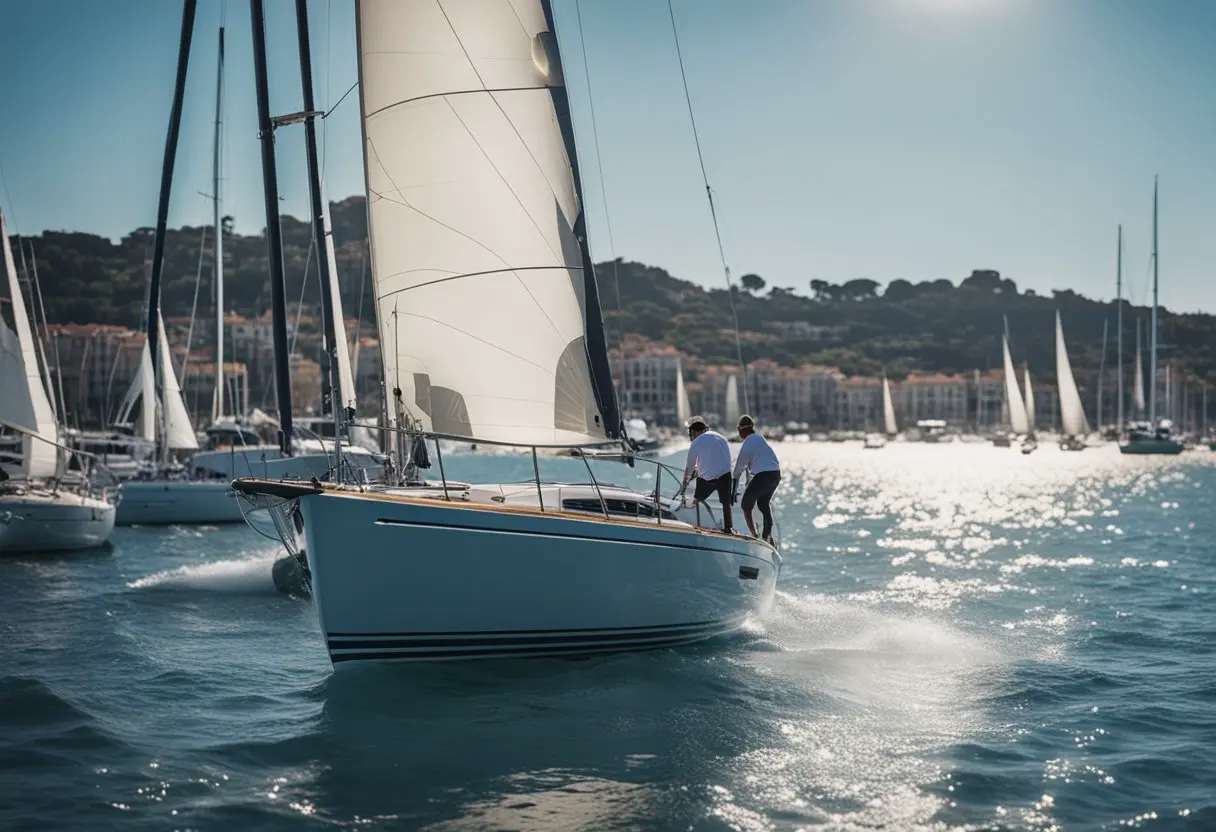
Sailing technology has come a long way in recent years, with advancements in navigation electronics, communication systems, and yacht automation. These technologies have made sailing yachts safer, more efficient, and more enjoyable to operate.
Navigation Electronics
Navigation electronics have undergone a significant transformation, with the advent of GPS and other advanced technologies. These systems provide accurate and reliable information about the yacht’s position, speed, and heading, making it easier for sailors to navigate through challenging conditions. Modern navigation systems also come with features like weather forecasting, route planning, and collision avoidance, which make sailing safer and more efficient.
Communication Systems
Communication systems have also improved significantly, with the introduction of satellite phones, high-speed internet, and other advanced technologies. These systems allow sailors to stay connected with the rest of the world, even when they are out at sea. They also provide access to real-time weather data, which can be critical for making informed decisions about sailing conditions.
Yacht Automation
Yacht automation has revolutionized the way sailing yachts are operated. With the help of advanced sensors and control systems, sailors can now control various yacht functions like sail trimming, steering, and anchoring, with the push of a button. This has made sailing yachts more accessible to a wider range of people, including those who may not have extensive sailing experience.
In conclusion, advancements in sailing technology have made sailing yachts safer, more efficient, and more enjoyable to operate. With the continued development of these technologies, we can expect to see even more exciting innovations in the years to come.
Sailing Culture and Community
Sailing is not just a sport; it is a way of life. It has a rich culture and community that spans the globe. From regattas and races to youth sailing programs, there is something for everyone in the world of sailing.
Regattas and Races
Regattas and races are a great way to experience the competitive side of sailing. These events bring together sailors from all over the world to compete against each other in a variety of different classes. Some of the most famous regattas and races include the America’s Cup, the Volvo Ocean Race, and the Sydney to Hobart Yacht Race.
Sailing Associations
Sailing associations are organizations that promote sailing and provide resources for sailors. These associations offer a variety of services, including training, certification, and racing. Some of the most well-known sailing associations include the Royal Yachting Association, the United States Sailing Association, and the International Sailing Federation.
Youth Sailing Programs
Youth sailing programs are a great way to introduce young people to the world of sailing. These programs offer a variety of different classes and activities, including racing, cruising, and sailing instruction. Some of the most well-known youth sailing programs include the Optimist Dinghy Association, the US Sailing Youth Championship, and the Royal Yachting Association Youth Sailing Scheme.
Overall, the sailing culture and community is a vibrant and welcoming one. Whether you are a seasoned sailor or just starting out, there is something for everyone in the world of sailing.
Frequently Asked Questions
What are the essential types of sails for a sailing yacht?
A sailing yacht typically has two essential types of sails: the mainsail and the jib. The mainsail is the larger sail and is usually located towards the rear of the yacht, while the jib is located towards the front. There are other types of sails, such as the spinnaker, which is used for downwind sailing, but these are not essential.
What should I consider when buying my first yacht?
When buying your first yacht, there are several factors to consider. These include the size of the yacht, the type of yacht, the condition of the yacht, and the cost. It is also important to consider your sailing experience and your intended use of the yacht. It is recommended that you take a test sail before purchasing a yacht to ensure that it meets your needs.
Which country is most favorable for purchasing a yacht?
No one country is most favorable for purchasing a yacht. However, some countries are known for having a large number of yacht manufacturers and dealerships, such as the United States, Italy, and France. It is recommended that you do your research and compare prices and options from different countries before making a purchase.
What are the best practices for maintaining a used sailing yacht?
Maintaining a used sailing yacht requires regular maintenance and upkeep. This includes cleaning the yacht, checking the rigging and sails, inspecting the engine and electrical systems, and performing routine maintenance tasks such as oil changes and filter replacements. It is recommended that you hire a professional yacht maintenance company to perform these tasks for you.
How does the 10% rule apply to yacht ownership and maintenance?
The 10% rule is a general guideline that suggests that you should budget about 10% of the purchase price of your yacht for annual maintenance and upkeep. This includes routine maintenance tasks such as cleaning, oil changes, and filter replacements, as well as larger repairs and upgrades. It is important to budget for these expenses to ensure that your yacht remains in good condition.
What are the minimum yacht specifications for global circumnavigation?
The minimum yacht specifications for global circumnavigation depend on several factors, including the size of the yacht, the type of yacht, and the sailing experience of the crew. Generally, a yacht should be at least 40 feet in length, have a displacement of at least 20,000 pounds, and be equipped with a reliable engine and navigation system. It is also important to have a well-trained crew and to carry all necessary safety equipment.
